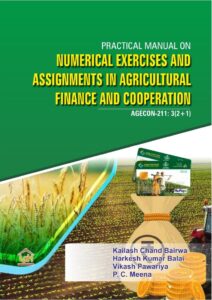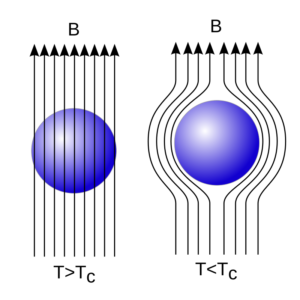Algebra
Matrices, Theory of Equation and Group Theory

Authors: Dr. Vimal Saraswat, Dr. Gajendrapal Singh Rathore
ISBN : 978-93-94954-35-9
Price: Rs. 385.00
Publisher: Himanshu Publications, Hiran Magri Udaipur; Himanshu Publications Prakash House, Ansari Road, New Delhi
E-mail : info@sacademy.co.in
Phone: +91 9664392614
To buy this book click on the link Algebra by Saraswat
This book includes the following topics
Matrix and its Rank
- Introduction
- Types of matrices
- Operation on matrices or matrix algebra
- Properties of matrix addition
- Properties of scalar multiplication of matrix
- Trace of a matrix
- Multiplication of matrices
- Properties of matrix multiplication
- Transpose matrix
- Symmetric and skew symmetric matrix
- Orthogonal matrix
- Conjugate matrix
- Conjugate transpose matrix or tranjugate matrix
- Unitary matrix
- Hermitian and skew-Hermitian matrices
- Sub matrix of a matrix
- Determinant of a square matrix
- Properties of determinant
- Singular and non-singular matrix
- Adjoint or adjugate matrix
- Inverse of a matrix
- Adjoint method for finding the inverse of a matrix
- Elementary transformation method for finding the inverse of a matrix
- Vector
- Linear combination
- Linear independent and linear dependent vector
- Rank of a matrix
- Column rank and row rank of a matrix
- Nullity of a matrix
- Equivalent matrix
- Normal or canonical form of a matrix
Linear Equations, Eigen Values and Eigen Vectors
- Introduction
- System of homogeneous linear equation and their solution
- System of non-homogeneous linear equations and their solution
Cramer’s rule, Inverse matrix method, Elementary transformation method
- Condition of consistency
- Working method for finding the solution of system of non-homogeneous linear equations
- Triangular or echelon form of a matrix
- Characteristics equation of a matrix
- Cayley-Hamilton theorem
- Application of Cayley-Hamilton’s theorem
- Eigen values and eigen vectors
- Properties of eigen values of any characteristic equation
- Nature of characteristic root or eigen values of some special type of matrices
Theory of Equations
- Introduction
- Rational integral function or polynomials
- Equation
- Roots of an equation
- Identity
- Properties of equation
- Relation between roots and coefficients of equation
- Solution of equation using relations of roots and coefficients
- Symmetric function of the roots
- Transformation of equations
Equation whose roots are k times the roots of a given equation, Equation whose roots are oppositely signed of a given equation, Equation whose roots are the reciprocals of the roots of a given equation
- Reciprocal equation
- Synthesis division
To diminish the roots by a given number; To remove a particular terms of an equation
Cubic and Biquadratic Equations
- Introduction
- Descarte’s rule of sign
- Solution of cubic equation by Cardon’s method
- Solution of general cubic equation by Cardon’s methods
- Nature of the roots of cubic equations
- Solution of biquadratic equation by Ferrari’s method
- Newton’s method of approximation
- Horner’s method
Group
- Introduction
- Cartesian product
- Algebraic structure
- Binary operation
- Group
- Finite and infinite group
- Groupoid or quasi group
- Semi-group
- Monoid
- Commutative or abelian group
- Order of a group
- Modulo operation
- Uniqueness property in group
- Properties of inverse in group
- Cancellation law in group
- Left and right identity element
- Left and right inverse
- Theorems based on semi group
- Integral power of an element of group
- Order of an element of a group
- Klein’s 4-group
- Theorems based on order of element of a group
Subgroup
- Introduction
- Subgroup
- Examples of subgroup
- Multiplication of complexes of a group
- Inverse of a complex of a group
- Necessary and sufficient condition for a subgroup
- Necessary and sufficient condition for a finite subset to be a subgroup
- Necessary and sufficient condition for union to be a subgroup
- Coset
- Lagrange’s theorem
- Index of subgroup
- Relation of congruence modulo of a group with respect to a subgroup
- Euler’s ф function
- Properties of Euler’s ф function
- Euler’s theorem
- Fermat’s theorem
Cyclic Group
- Introduction
- Cyclic group
- Theorems based on cyclic group
Normal Subgroup and Quotient Group
- Introduction
- Normal subgroup
- Simple group
- Theorem based on normal subgroup
- Quotient group
- Commutator subgroup
Permutation Group
- Introduction
- Permutation
- Equivalent or equal permutation
- Identity permutation)
- Product of permutation
- Inverse permutation
- Permutation group
- Symmetric group
- Cyclic permutation or cycles and the length of cyclic permutation
- Inverse of cycle
- Order of a cycle
- Disjoint cycles
- Order of permutation
- Transposition
- Even and odd permutation
Group Homomorphism
- Introduction
- Homomorphism
- Types of homomorphism
Monomorphism, Epimorphism, Isomorphism, Endomorphism, Automorphism
- Kernel of homomorphism
- Theorem based on homomorphism
- Natural homomorphism
- Fundamental theorem of homomorphism
- Three theorems on isomorphism
- Cayley’s theorem
- Inner automorphism
Centre of group, Normalizer and Class equation
- Introduction
- Conjugate elements
- Conjugate class
- Self-conjugate element
- Normalizer of an element
- Centre of group



